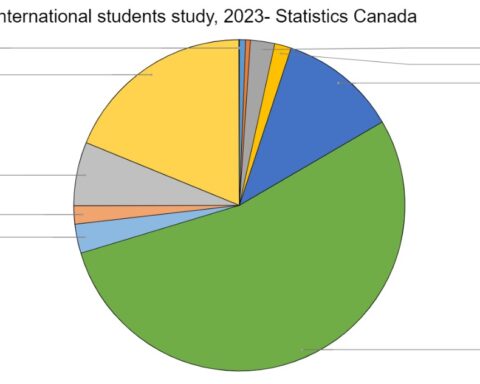Immigrant women are the least likely Canadians to be found in boardrooms and in high-level executive roles, according to a new study by Statistics Canada.
The study provides the first socio-economic profile of immigrant women at admission who have reached management positions in their careers once employed in Canada, said the report authors.
“Recent findings showed that immigrant women were underrepresented in decision-making roles, as 18 per cent of executive women were immigrants, while immigrant women accounted for one in four Canadian women workers,” the report said.
According to Osler Hoskin & Harcourt LLP’s latest diversity report, women held 26 per cent of a total of 5,112 board seats among Canadian companies.
“After eight years, the change to board composition in Canada is now obvious and widespread as Canadian boards have surpassed several important diversity milestones on their journey to include more diverse perspectives in decision-making at senior levels within the organization,” noted the report.
However, just 10 per cent of board positions were held by directors who are members of visible minorities, Indigenous peoples or persons with a disability.
“Eight years is a long time to achieve the milestones that have been reached to date,” the report says.
“And it will take considerable, sustained effort to achieve gender parity and representation by other diverse groups that approximates the demographics of the population in Canada.”
Other key findings in the Statistics Canada study include:
- Among all executives, immigrant women were the least likely to contribute on a board of directors. Canadian-born men, immigrant men and Canadian-born women were all more likely to work as board directors.
- Immigrant women were less likely to occupy top-level roles in corporations. For example, immigrant women hold per cent of the top jobs compared to 22 per cent of immigrant men.
- Among directors and officers, immigrant women executives were much less likely than immigrant men executives to arrive in Canada as principal applicants. Women were more likely to be admitted as spouses or dependent economic applicants compared to immigrant men executives.
- The United States ranked first as the birth country of immigrant women executives (12 per cent), followed by the United Kingdom (11 per cent), China (8 per cent), Hong Kong (6 per cent) and France (5 per cent).
- By contrast, the top five countries of birth among the overall population of immigrant women were China (11.1 per cent), the Philippines (10.6 per cent), India (10 per cent), the United States (2.7 per cent) and the United Kingdom (2.6 per cent).
- Almost two-thirds (63 per cent) of the immigrant women executives worked in Ontario-based enterprises compared to 48 per cent of Canadian-born women executives.
- Chinese women executives were the least likely to work in large firms, whereas women executives born in the U.S. were the most likely to do so. 40 per cent of Canadian-born women executives worked in large companies.
A multiple-award winning journalist, Fabian Dawson is an internationally acclaimed author, filmmaker and media expert. His work over the last four decades spans the globe and he also serves as a consultant/strategic advisor to a variety of international companies. As deputy editor-in-chief of The Province, part of the Postmedia chain, Dawson led initiatives within a special publications group to provide directed content for a variety of organisations. He was named the 2019 recipient of the Bruce Hutchison Lifetime Achievement Award at Jack Webster Awards. Dawson has been invited by the governments of India, Malaysia, Taiwan, China, Hong Kong and the United States to act as a media observer/advisor on a variety of Asian-Canada issues. Dawson, now operates FD Media, which specializes in harnessing editorial assets to revenue generating opportunities.





